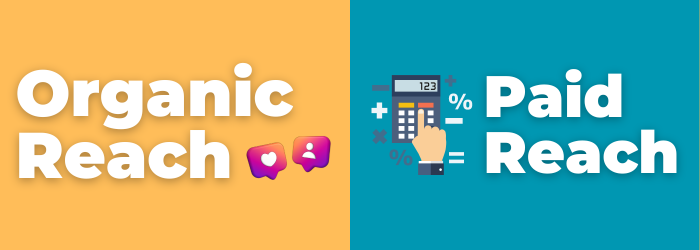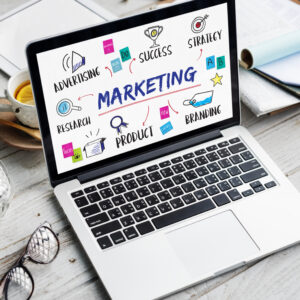Introduction
In the modern era every business needed marketing to reach their target audience to maximize the ROI. To achieve this goal we require some kind of marketing strategies. Digital marketing provides us options like Organic reach and Sponsored ads campaign to promote business online. Now its a question for a business owner which platform is good for their business.
To understand this we should know the difference beween Organic reach and Sponsored ads. Both have their unique advantages and challenges, making it essential for marketers to find the right balance between the two.

Organic Reach:
Organic means Free promotion of the business products and services in social media platforms and social networking sites.
Organic reach refers to the visibility your content gains without paid promotions. By promoting business related content on social media platforms to get audience engagement and expected results.
This kind of marketing efforts will count as organic methods.
Example: Blog writing, SEO, Social media posting, Youtube video marketing and Website sharing.
Here are some advantages of focusing on organic reach:
- Cost-Effectiveness: While creating quality content requires resources, organic reach can be more sustainable over time since it doesn’t involve ongoing costs like ads.
- Building Trust: Audiences often perceive organic content as more authentic, leading to stronger relationships and brand loyalty.
- Longevity: Well-optimized content can continue to attract traffic long after it’s published, providing ongoing value without additional investment.
On the downside, organic reach often takes longer to build momentum and requires consistent effort and quality content to maintain visibility in crowded markets.
Sponsored Ads:
Sponsored ads are paid promotions that allow businesses to reach a wider audience quickly. Platforms like Google Ads, Facebook, and Instagram provide robust targeting options, enabling marketers to tailor their ads based on demographics, interests, and behaviors. Here are some key benefits of sponsored ads:
- Immediate Visibility: Sponsored ads can generate instant traffic and visibility, making them ideal for time-sensitive promotions or new product launches.
- Targeted Reach: Advanced targeting features allow businesses to reach specific audiences, increasing the likelihood of conversion.
- Scalability: With the right budget, businesses can scale their advertising efforts to reach larger audiences across various platforms.
However, sponsored ads also have drawbacks. They require ongoing investment, and without proper management, costs can escalate quickly. Additionally, ad fatigue can set in, leading to diminishing returns over time.

Finding the Right Balance
Achieving the ideal balance between sponsored ads and organic reach depends on your business goals, audience, and resources. Here are some strategies to help you find that equilibrium:
- Assess Your Goals: Determine what you want to achieve. If you’re launching a new product, sponsored ads might be more effective. For long-term brand building, invest in organic content.
- Leverage Each Strategy: Use sponsored ads to promote high-performing organic content. For example, if a blog post is gaining traction, consider boosting it with paid ads to reach a larger audience.
- Diversify Your Content: Create a mix of content types—some aimed at immediate engagement (ads) and some designed for long-term value (blogs, videos). This approach keeps your audience engaged while building brand authority.
- Monitor and Adjust: Use analytics tools to track the performance of both sponsored ads and organic content. Adjust your strategies based on what is driving the most engagement and conversions.
- Experiment and Iterate: Don’t be afraid to test different approaches. A/B testing can help you find the most effective messaging and targeting for both paid and organic content.
Conclusion
Both sponsored ads and organic reach play critical roles in a comprehensive digital marketing strategy. By understanding the strengths and limitations of each, businesses can create a balanced approach that maximizes reach and engagement. Ultimately, finding the right mix will help you build a sustainable brand presence while achieving your marketing goals. Embrace the synergy between these two strategies, and watch your digital marketing efforts flourish!





thanks for providing such an amazing information
thanks for providing such an amazing information.